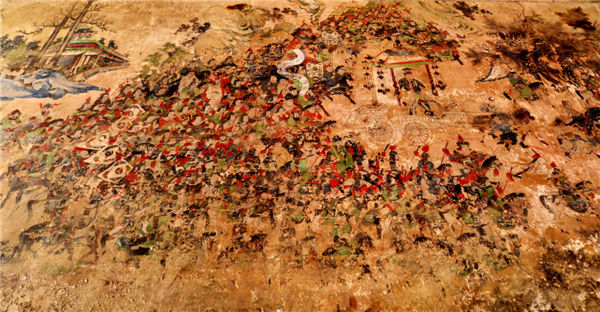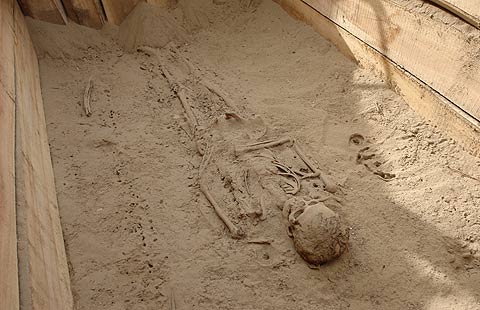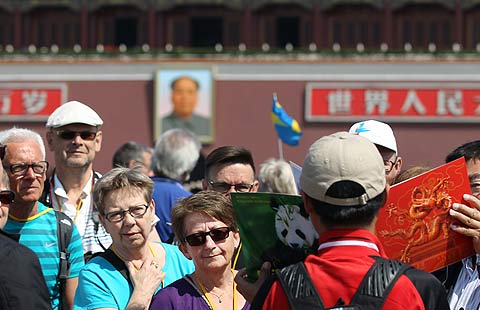A mountain that scales China's history
Updated: 2014-06-02 10:15
By Zhao Ruixue (China Daily)
|
||||||||
 |
|
A giant Taoist mural from the Song Dynasty (960-1279) depicts a grand inspection by the deities of Mount Taishan, which features forests, palaces, bridges and 697 people. |
"Among the mountains of China, Mount Taishan is the most intertwined with Chinese history. Cultural interests and natural landscapes are well integrated into the mountain," said Du Xiaofan, a member of UNESCO's Beijing office.
Mount Taishan, with its dense forests and ancient temples, has been the site for imperial pilgrimages for roughly 2,000 years, according to UNESCO, and the artistic masterpieces found throughout the mountain are in perfect harmony with the natural landscape.
Standing 1,545 meters above sea level, the mountain is by no means the tallest in China, but it is among the first to be blessed with the sunrise's golden hues because of its geographical location in East China. It was regarded in ancient times as the closest position to the sky.
Over 3,000 years, Chinese emperors have made pilgrimages to Mount Taishan to pray to the gods. Scholars and poets have marveled at the majesty of the mountain and composed poems and prose in honor of it, some inscribing them on the mountain.
Twelve emperors, beginning with Qin Shihuang, the first emperor that unified China in 221 BC, have paid homage in a ritual called "Fengshan Sacrifices" at Mount Taishan, said Lyu Jixiang, a researcher with Taishan's management committee.
"There are more than 2,000 rock inscriptions and stone tablets testifying to visits by emperors and scholars," said Lyu.
Lyu said more than 10,000 poems and works of prose have been found.

 Council of Fashion Designers of America Awards
Council of Fashion Designers of America Awards
 Fan Bingbing, first Chinese actress in Barbie Hall of Fame
Fan Bingbing, first Chinese actress in Barbie Hall of Fame
 Awarding ceremony of 2014 hito Pop Music held in Taipei
Awarding ceremony of 2014 hito Pop Music held in Taipei
 Zhao Liying's photo shoot for Children's Day
Zhao Liying's photo shoot for Children's Day
 'Taken 2' grabs movie box office crown
'Taken 2' grabs movie box office crown
 Rihanna's 'Diamonds' tops UK pop chart
Rihanna's 'Diamonds' tops UK pop chart
 Fans get look at vintage Rolling Stones
Fans get look at vintage Rolling Stones
 Celebrities attend Power of Women event
Celebrities attend Power of Women event
Most Viewed
Editor's Picks

|

|

|

|

|

|
Today's Top News
Rapid-fire questions turn up heat on Hagel
Cyber security row is likely to have fallout
NBC censors Snowden interview
US being led a merry chase in eastern Asia
Hagel speech reflects US hypocrisy
US' containment fantasy
This Titanic will be a tourist attraction
Abe, Hagel's accusations rejected
US Weekly

|

|







